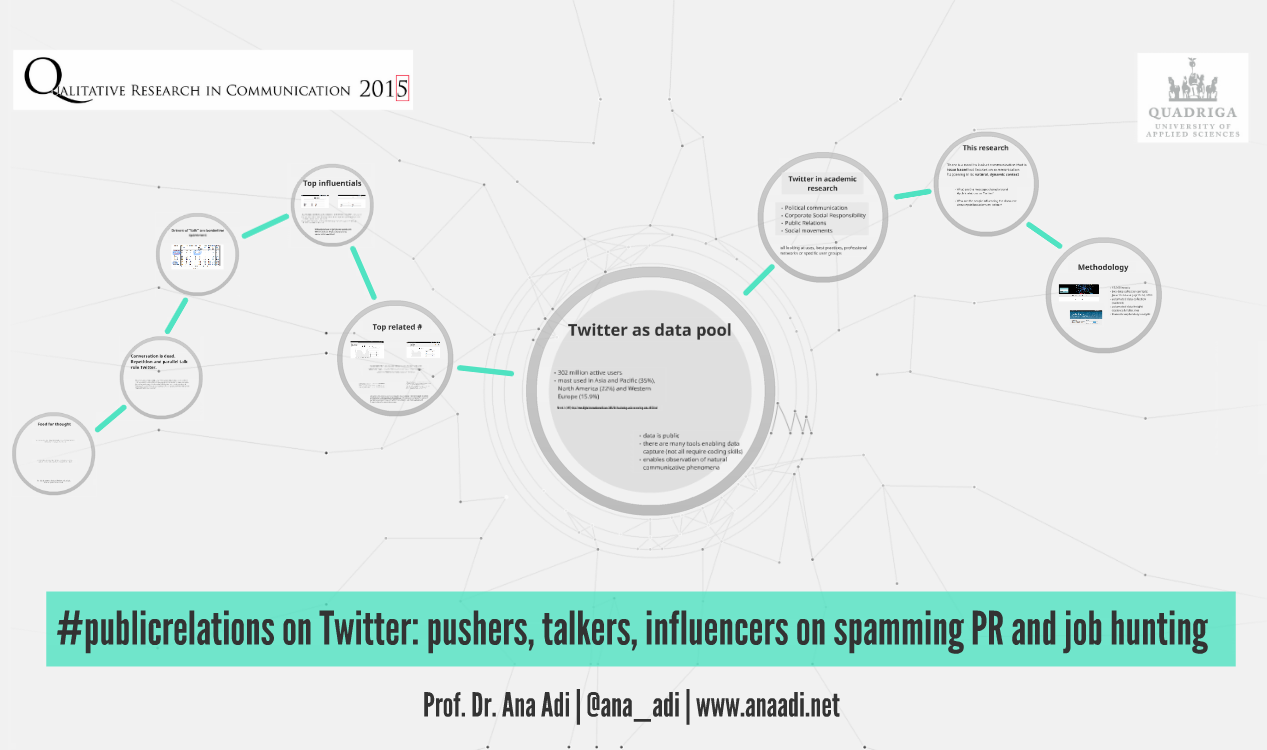Masterclass #storytelling as a legitimization tool: just humanize the story! Peer to peer trust @ana_adi #ecs15 pic.twitter.com/wiUbPEWfvm
— TamaraGNS (@TamaraGNS) June 25, 2015
UPDATE: The article elaborating on the conference paper has now been published in the Romanian Journal of Communication and Public Relations. The full reference and link to the FULL article are below.
Adi, erectile
A. (2015)Â purchase
Talkers, this site
Influencers on Spamming PR and Job Hunting. Romanian Journal of Communication and Public Relations. 17 (3), 41-57.
ORIGINAL POST
I have just recently returned from Bucharest, Romania, where I hosted a panel on Digital Explorations as part of the Qualitative Research in Communication 2015 conference. The conference was very good with the papers presented of a high quality and immense diversity, qualitative research bringing together academics from communication to film and all the way to health.
I also delivered a paper looking at the general discourses about #publicrelations on Twitter based on a two period equal sample. Inspired by the diversity of academic research focused on Twitter (Verhoeven et al (2012) and Sweetsner & Kelleher discuss how practitioners use social media; Lovejoy, Waters and Saxton evaluate how NGO are engaging stakeholders though the new medium, while Saffer, Sommerfeldt and Taylor (2013) suggest that Twitter interactivity influences the quality of organization–public relationships) the aim of my paper was to observe issue conversations in a natural setting.
With questions about the professionalization of Public Relations as well as about the portrayals and perceptions of the profession continuing to intrigue researchers, it is surprising that only Xifra and Grau (2010) looked into the type of information shared in tweets about public relations.
To collect and draw partial insights from the data (such as high frequency hashtags, most active and most influential users), I used Socioviz, a free online platform that can scrape, analyze and save up to 5000 tweets on any given query. I used two data collection points (one in June and one in July, getting therefore an impressive 10,000 tweets collection). Using the insight Socioviz provided, I then qualitatively assessed the emerging themes about public relations focusing on association of hashtags and type of messages shared.
My conclusions:
- Conversation is dead. Repetition and parallel talk rule Twitter… at least there where the conversation is more visible.
- The most active posters are borderline spammers promoting hashtags that do not contribute to the discussion and/or advancement of the profession. See here associations like #gossip.
- Most influential accounts gain their status via retweets not conversation. The RT is thus the symbol of valuable content (though with no commentary attached, the contributive value is difficult to assess)
- #publicrelations is often hijacked or associated with other fields… #gossip, #webdesign and #design are perhaps the furthest from what PR manuals and practitioners would define the practice
- a high number of tweets shared on #publicrelations is about jobs (posting, sharing, advertising…and less seeking or applying).
What are your thoughts? Is conversation about #publicrelations (outside twitter chats) dead on Twitter?
